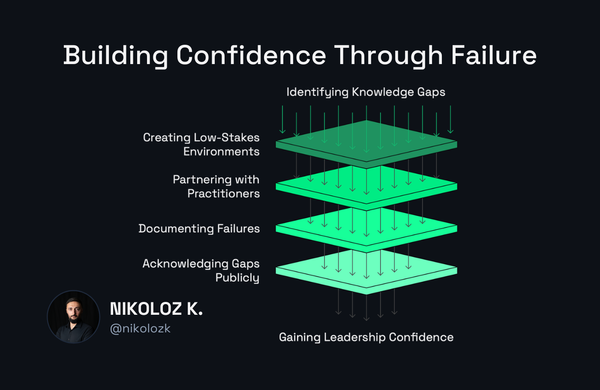Taking Risks: The Essential Element of Success

Nikoloz Kokhreidze
Explore the essential role of risk-taking in business and personal growth. Learn types of risks, benefits, and strategies for effective risk management.

In its simplest form, risk-taking is the willingness to try something new or different, despite the potential for failure or loss. In a business context, this might involve launching a new product, pursuing a new market, or making a strategic investment. In life, risk-taking might include starting a new job, traveling to a new place, or even getting married. Whatever the context, risk-taking is essential to achieving success, both in business and in life.
What is Risk-Taking?
Risk-taking is about embracing uncertainty and the potential for failure in order to potentially gain something positive. Risk-taking is also about having the courage to take a chance and make a decision, even when the outcome is uncertain. This could be a financial reward, a new experience, a different perspective, or simply the satisfaction of knowing that you took a chance and it paid off.
The most successful people in the world are often those who have taken risks and put themselves in a position to capitalize on the opportunity. Whether it's Steve Jobs launching the first Macintosh computer or Richard Branson starting a new airline, risk-takers have often gone on to become highly successful.
Benefits of Risk-Taking
So why is taking risks essential for success? Here are a few reasons why taking calculated risks can be beneficial:
It Allows You to Explore New Ideas: Taking risks allows you to explore ideas that may not have been available to you before. It will enable you to push the boundaries of what's possible and try something you may not have considered before. Taking risks also allows you to gain new insights and make connections that can lead to valuable opportunities.
It Helps You Grow: Taking risks can be a great way to challenge yourself and push the limits of your abilities. It can also allow you to learn from your mistakes, become a better version of yourself and improve your growth mindset. Taking risks can help you become more resilient and better prepared to deal with future challenges.
It Helps You Stand Out: Risk-takers often stand out from the crowd. They are the ones who are willing to put themselves out there and try something new. Taking risks can help you stand out from the competition and show that you're eager to go above and beyond to achieve your goals.
It Encourages Creativity: Taking risks encourages creativity and out-of-the-box thinking. It's a great way to think outside the box and find innovative solutions to problems. Taking risks can also lead to new ideas and products that may not have been available before.
Types of Risk-Taking
There are many different types of risk-taking. I will list some of them below:
Creative: Taking risks with creativity, such as trying new art forms or experimenting with new ideas. It involves stepping outside of your comfort zone and taking the chance that a new idea or approach may not work out as expected.
Financial: Taking risks with financial resources such as: investing money in stocks or other financial instruments, starting a business, or lending money to others.
Intellectual: Taking risks with intellectual pursuits, such as engaging in deep learning or exploring new fields of study. For example, challenging yourself to think critically and creatively, even when there is a risk of failure or discomfort.
Physical: Taking risks with physical safety. This can involve engaging in activities that have the potential to cause physical harm, such as extreme sports or participating in dangerous activities.
Professional: Taking risks in the workplace to achieve a goal or gain an advantage in your career. This can include pursuing a new job, starting a new business venture, or taking on new responsibilities or challenges within an existing job.
Psychological: Taking risks with emotional or mental well-being, such as trying new things or taking on new challenges. For example, a person afraid of public speaking may decide to take a public speaking course to overcome their fear. This is a form of psychological risk-taking, as the person is exposing themselves to a potentially stressful or anxiety-provoking situation to improve themselves.
Social: This involves taking risks with social status or relationships, such as speaking out on controversial topics or challenging authority. This can include speaking out on controversial topics, challenging authority, or taking actions others may view as unconventional or unpopular.
Strategies for Effective Risk-Taking
When it comes to risk-taking, it's important to have a clear strategy and plan in place:
- Identify and Assess Risks: Start by carefully considering the risks involved and weighing the potential benefits against the potential drawbacks.
- Create a Plan: Once you have identified and assessed the risks, create a plan to mitigate them. This could include having backup plans or seeking guidance and support from others.
- Communicate with Others: Involving others in the risk-taking process can help to build support and reduce the potential impact of the risk. This could include seeking the advice of others or discussing the risks with a mentor or supervisor.
- Embrace Failure: It is essential to recognize that failure is a natural part of risk-taking and to learn from it rather than letting it discourage you.
- Take Small Risks: Start with small ones and gradually work to bigger ones. This way, you can build confidence and experience in risk-taking.
- Celebrate Successes: When risks pay off, celebrate your success and share it with others. Try to build momentum by encouraging yourself to continue taking more significant risks.
- Stay Positive: Approach risk-taking with a positive attitude and stay focused on the potential benefits. It is crucial to keep yourself motivated and keep you moving forward.
Conclusion
Risk-taking is an essential part of achieving success, both in business and in life. While taking risks can be scary, it allows us to explore new possibilities, discover new paths, and find opportunities that may not exist without taking risks. So take the plunge and start taking risks today.


